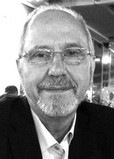Physical education for functional and psychological rehabilitation
Фотографии:
ˑ:
Dr.Biol., Professor A.P. Shklyarenko1
Dr.Hab., Professor T.G. Kovalenko2
PhD, Associate Professor D.A. Ulyanov2
1Slavyansk-on-Kuban branch of Kuban State University
2Volgograd State University, Volgograd
Objective of the study was to theoretically substantiate the use of the means and methods of physical education applied in conditions of the children’s orthopaedic sanatorium to children and adolescents diagnosed with scoliotic diseases under the principles of mobilization of the adaptive, protective and compensatory mechanisms of a growing body.
Methods and structure of the study. The study was carried out at the basis of the Children’s Sanatorium named after N.I. Pirogov (Gelendzhik). Sampled for the study were the 8-16 year-old females diagnosed with the I-III degree scoliosis. At the first stage, we conducted psychological and sociological research using a questionnaire survey to study the subjects' levels of physical development and physical working capacity, as well as their motor activity and psychological stability levels. In the course of treatment, we tested the patients' strength endurance of the rectus abdominis muscle and erector muscle of the spine. At the second stage, a set of rehabilitation measures with the use of the physical culture means and methods and their effectiveness was examined. At the final stage, we assessed the effectiveness of the protracted sanatorium treatment before and after the experiment.
Results and conclusions. The optimal level of motor activity in the day regimen of children diagnosed with different degrees of scolitic disease helps them maintain the functional and physical working capacity within the genetically determined age characteristics. The effectiveness of training sessions involving various corrective exercises, providing long-term and targeted performance, was higher in the 8-11 year-olds than in the teenagers (12-16 years of age). It should be noted that the physiologically substantiated use of physical therapy in the period of intensive bone growth, taking into account the etiology of the II-III degrees of scoliosis, makes it possible to slow down the progression of disease, and, under certain conditions, to achieve positive results in the esthetic component of the body posture (up to 17%). The stage of initial diagnosis of the III degree of scoliosis showd that the possibility to mitigate the negative effects of spine deformations is significantly limited.
Keywords: physical education, scoliotic disease, physical exercise, level of psychological stability, physical working capacity.
References
- Gertsen G.I., Lobenko A.A. Reabilitatsiya detey s porazheniyami oporno-dvigatelnogo apparata v sanatorno-kurortnykh usloviyakh [Rehabilitation of children with musculoskeletal injuries in therapeutic resort conditions]. Moscow: Meditsina, 1991. pp. 175-188.
- Stepkina M.A., Fedotov V.K., Shklyarenko A.P. Sistema diagnosticheskikh i konservativnykh lechebnykh meropriyatiy pri narusheniyakh osanki i deformatsiyakh pozvonochnika u detey i podrostkov [System of diagnostic and conservative treatment measures for posture disorders and spinal deformities in children and adolescents]. Omsk: OOO « LEO»» 2009. 240 p.
- Shklyarenko A.P. Skolioz i fizicheskaya kultura [Scoliosis and physical education]. Teaching aid. Volgograd: Volgograd Scientific Publishing House, 2007. 196 p.
- Shklyarenko A.P., Kovalenko T.G., Ulyanov D.A. Funktsionalnaya korrektsiya skolioticheskoy bolezni sredstvami fizicheskoy kultury u detey i podrostkov [Functional correction of scoliotic disease by means of physical education in children and adolescents]. Volgograd: VolSU publ., 2016. 232 p.



 Журнал "THEORY AND PRACTICE
Журнал "THEORY AND PRACTICE